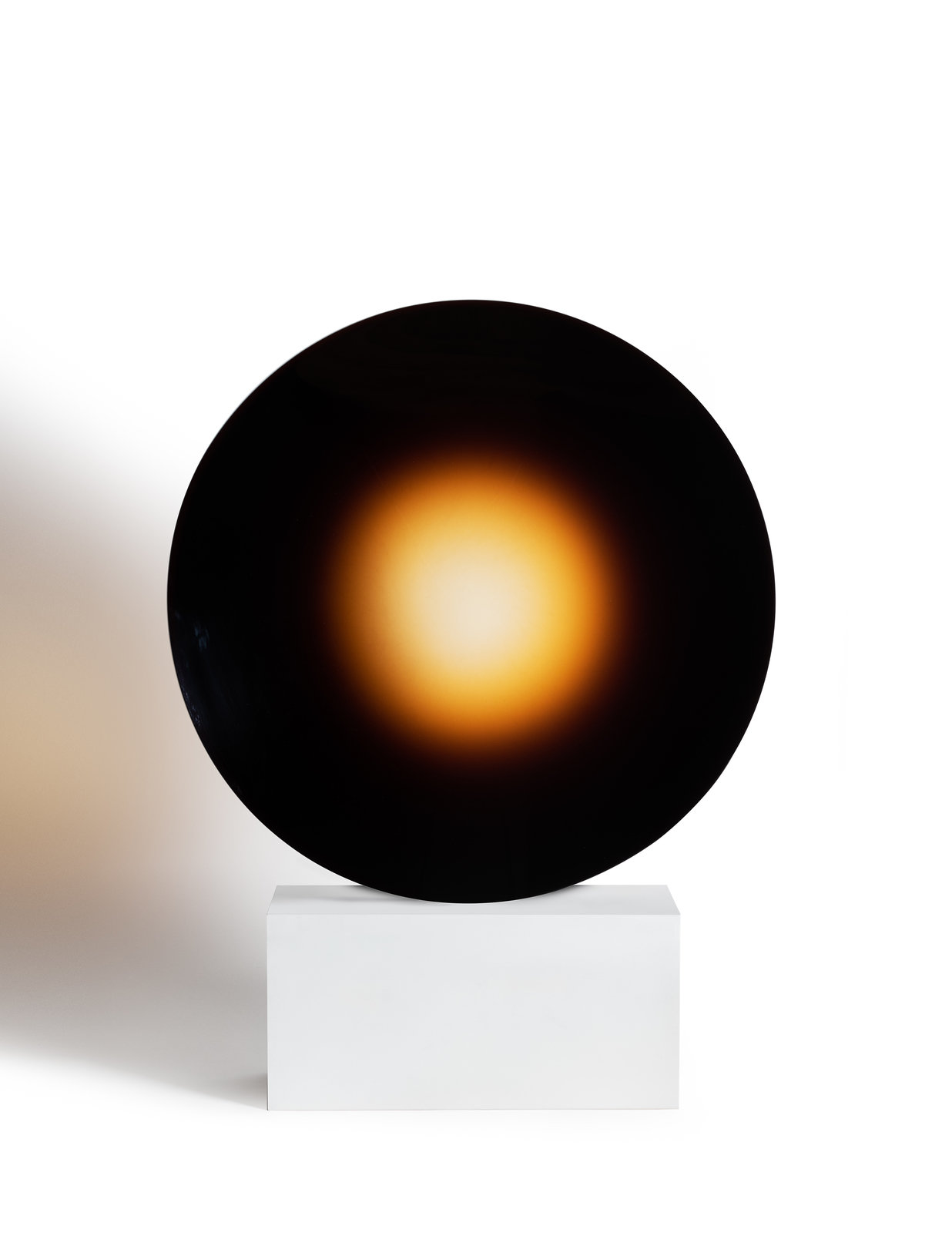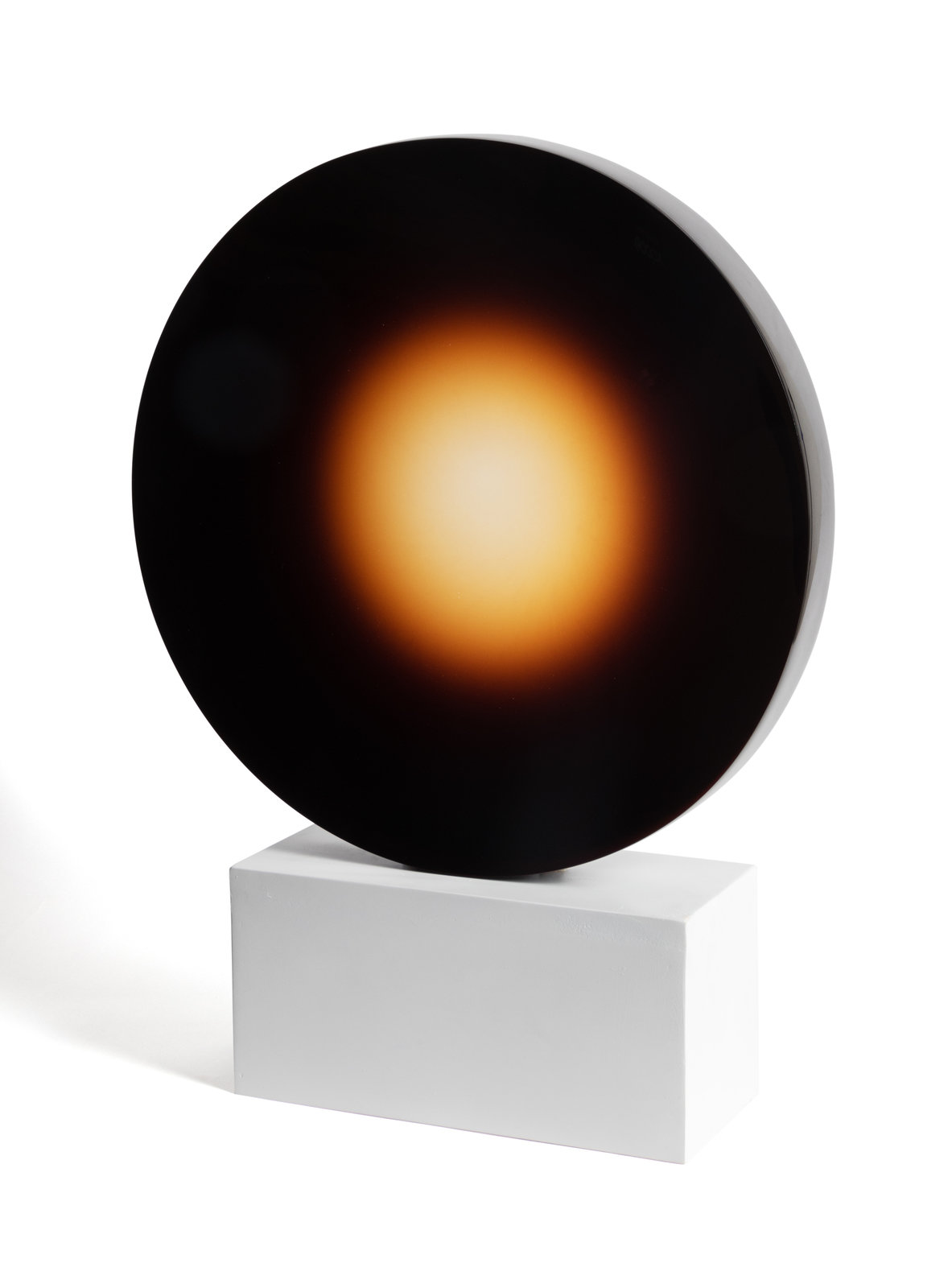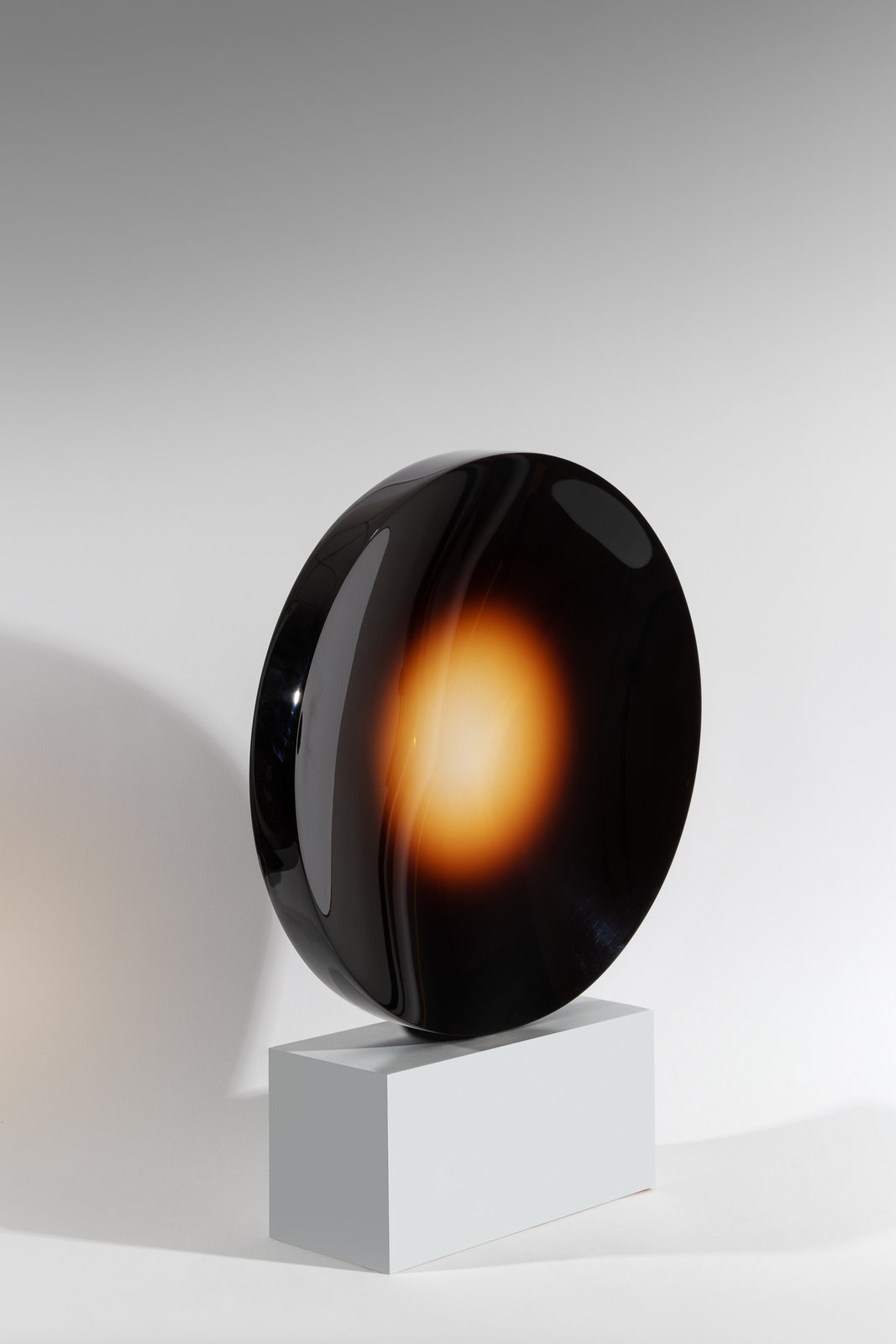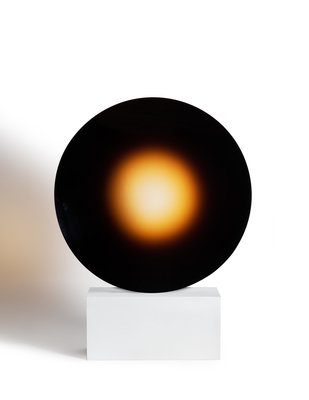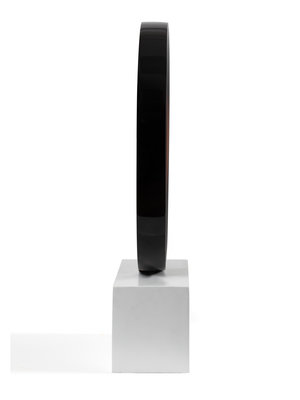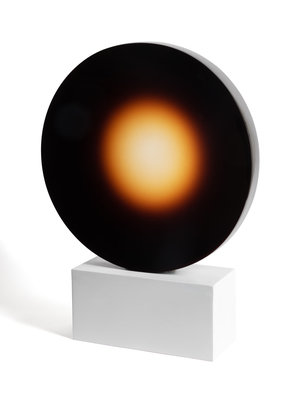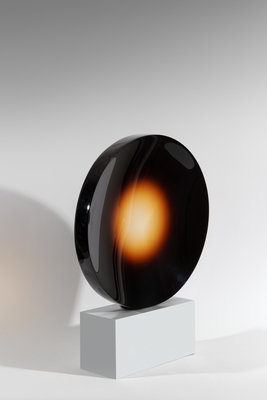Fred Eversley
(American, b. 1941)
Untitled (parabolic lens)
, 1976
Sale 1058 - Post-War & Contemporary Art
Sep 28, 2022
10:00AM CT
Live / Chicago
Estimate
$150,000 -
$250,000
Sold for $100,000
Sold prices are inclusive of Buyer’s Premium
Lot Description
Fred Eversley
(American, b. 1941)
Untitled (parabolic lens)
, 1976cast polyester
19 1/2 x 19 1/2 x 2 1/4 inches.
Provenance:
Acquired directly from the Artist by a Private Collector
Lot Essay:
The Art and Science of Fred Eversley
Situated at the intersection of art and technology, the parabolic sculptures of Fred Eversley (American, b. 1941), particularly the one offered here, act as an otherworldly experience to the viewer, emphasizing emotional connection to the artwork through the concentration of energy and movement.
Raised in New York and originally trained as an engineer, Eversley moved to California to work on a variety of projects, including as a senior project manager in the building of test laboratories for NASA in the 1960s. In the late 60s, Eversley began to dabble in art in convalescence following an accident; after being long-surrounded by artists in his Venice Beach neighborhood, he then decided to commit himself to art full-time.[i] His rise was meteoric: he had several landmark exhibitions in 1970 (including a solo show at the Whitney and subsequent inclusion in the 1973 Whitney Biennial), became the first artist-in-residence at the National Air and Space Museum in 1977, and has been included in a myriad of exhibitions since, including participation in the 2017-2020 Soul of a Nation: Art in the Age of Black Power and upcoming shows at David Kordansky Gallery and the Benton Museum of Art at Pomona College. Though leaving his official engineering career behind, Eversley actively uses this training to make his characteristic sculptures, and scientific principles underline his process.
Using a lathe, Eversley spins heated polyester resin across an axis to create a parabola from the plastic, which is then heavily polished. Each sculpture can take about two weeks to create, assuming all goes well.[ii] The result is a circular sculpture inverted on stands, with the parabola creating a front which is concave and verso convex, made up of different bands of heavily luminous color. In Untitled (parabolic lens), 1976 that Hindman is pleased to offer, the viewer is greeted with a miniature sun: white center, fading to yellow, and then orange, edged in black. So highly buffed that it rejects the idea of human construction, the work emphasizes the sublime. This effect is highlighted by the colors, which are so intense that they are difficult to view all at once, denying complete entry into the artwork so that the viewer is drawn to dance around the sculpture—to move in closer, to shuffle back to reframe, to circle the sculpture in the round. The concave recto inverts the reflection so that the viewer sees themself reflected back, upside down. This ability to be in communication with its surroundings—catching and rebounding changing reflections depending on time of day, the space in which its placed, and the viewer— allows the work to always be in flux. So important to Eversley is this element of personal connection to each work that he rarely provides titles so as not to color viewer’s perceptions.[iii] This is also why he believes that his sculptures so rarely come to market, as his work needs to be lived with to fully appreciate their ever-shifting intricacies over months and years.[iv]
This offered sculpture showcases a triumph of artistic and scientific achievement through the shrinking of a solar system—a heliocentric world in miniature that is, in itself, self-contained but nonetheless invites the participation of the world around it in order to be truly complete. Taking part in progressive movements throughout his life, including the Civil Rights Movement, Eversley is most preoccupied by the energy crisis and society’s relationship with energy, with which he engages directly with his art. Eversley’s understanding of energy as the ultimate underpinning of his work—and the source connecting all humans and systems together—is clear. He states that:
“The original and ultimate source of all energy on earth is the sun. The extensive utilization of solar energy seems the most likely long-range solution to the energy crisis. My early sculptures were directly influenced by the concept of this solar energy source, but were representative of the broader sense of energy as both a physical and metaphysical concept.”[v]
This pursuit of the concentration of energy would be impossible in Eversley’s oeuvre without the parabola. A metric of scientific achievement and space exploration in its common use of telescopic reflectors, the parabola is known as the only shape capable of concentrating all energy to a single focal point. As said by Eversley: “it’s because of the concentration of energy. [A parabola] creates a very unique form with very specific optical properties and acoustical properties and, if there are metaphysical energies, it’s only reasonable to assume that they follow the same laws of optics as all known forms of energy do.”[vi]
This unique application of scientific principles in pursuit of a particularly humanistic connection sets Eversley’s sculptures apart. Untitled (parabolic lens), 1976 draws in the viewer to its microcosmic exploration of energy: ever changing, endlessly fascinating, and limitless it its potential.
Bibliography:
Eversley, Fred. “Energy.” Accessed August 9th, 2022. http://fredeversley.com/about/energy.
“The Object and You: Fred Eversley in Conversation with Jenny Dally.” College Art Association, February 25, 2021. http://artjournal.collegeart.org/?p=15206.
Condition Report
The physical condition of lots in our auctions can vary due to
age, normal wear and tear, previous damage, and
restoration/repair. All lots are sold "AS IS," in the condition
they are in at the time of the auction, and we and the seller make
no representation or warranty and assume no liability of any kind
as to a lot's condition. Any reference to condition in a catalogue
description or a condition report shall not amount to a full
accounting of condition. Condition reports prepared by Hindman
staff are provided as a convenience and may be requested from the
Department prior to bidding.
The absence of a posted condition report on the Hindman website or
in our catalogues should not be interpreted as commentary on an
item's condition. Prospective buyers are responsible for
inspecting a lot or sending their agent or conservator to inspect
the lot on their behalf, and for ensuring that they have
requested, received and understood any condition report provided
by Hindman.
Please email fineart@hindmanauctions.com for any additional information or questions you may have regarding this lot.
